The Lost Tomb of Henry VIII: Harry and Meghan Walk Over Royal Bones
This post contains some affiliate links
On Monday, 19 September 2022, Queen Elizabeth II will be laid to rest in the King George VI Memorial Chapel, part of St. George’s Chapel at Windsor Castle, next to her husband of 73 years, Prince Philip.
The Queen will be surrounded by her family. Her parents: King George VI, who died in 1952, and Queen Elizabeth the Queen Mother, who died in 2002, as well as her sister, Princess Margaret, who also died in 2002. All are interred beneath the floor of the chapel, part of the magnificent Chapel of St. George’s, home to the Order of the Garter.
A few years back, I was intrigued to learn more about the burial place of one of the Tudor dynasty’s most infamous monarchs: Henry VIII. He is interred alongside Jane Seymour in the crypt underneath the main chancel. But Henry himself had much bigger plans for his tomb. It was the tomb that never was, and it is a fascinating story.
I initially wrote this blog in the run-up to the wedding of Prince Harry and Megan Markle in 2018, as I knew they would literally be walking over royal bones as they made their way to the high altar. So, if you’d like to follow in Harry and Meghan’s footsteps and walk over those same bones, read on.
St George’s Chapel and The Lost Tomb of Henry VIII
Are you a fan of Henry VIII, or are you more than a bit peeved at how he treated the women in his life? I know I fall into the latter camp! Have you ever wanted to give him a piece of your mind? I have. Of course, that will never happen; all those characters we know so well, including Henry himself, are long gone. Yet, to use a turn of phrase, there is still a way to ‘walk all over him’ as Harry and Meghan will do as they marry in St. George’s Chapel, Windsor, in just under two weeks.
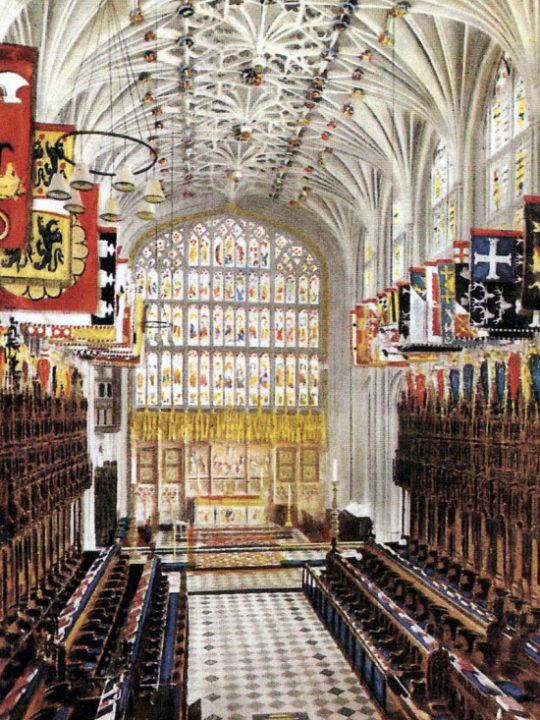
The Lost Tomb of Henry VIII: Grand Plans!
Never knowingly underselling himself, Henry had always planned a grand funerary monument as befitting a great Christian prince of Europe. Following the fall of Cardinal Wolsey in 1529, he earmarked the marble base, pillars and statues which the cardinal had already commissioned for his own tomb. The King’s big ideas were captured in a document called, ‘The manner of the Tombe to be made for the King’s Grace at Windsor’ (now sadly lost), and it was to be erected in St George’s Chapel, Windsor, where Henry’s grandfather and grandmother, Edward IV and Elizabeth Woodville were already buried.
It was to be ‘ornamented with ‘fine Oriental stones’ and resplendent with white marble pillars, gilded bronze angels, four life-size images of the King and Queen Jane, and a statue of the King on horseback under a triumphal arch, ‘of the whole stature of a goodly man and a large horse’. In all, there were to be one hundred and thirty-four figures, including St George, St John the Baptist, the Prophets, the Apostles and the Evangelists, ‘all of brass gilt as in the pattern appeareth’.’
At the time of Henry’s death in his bedchamber in the dying days of January 1547, in the Tudor Palace of Whitehall, the tomb was still incomplete, so Henry’s corpulent body was temporarily placed inside a vault under the choir in St George’s Chapel, alongside Queen Jane. There, it would remain despite the King’s grand plans.
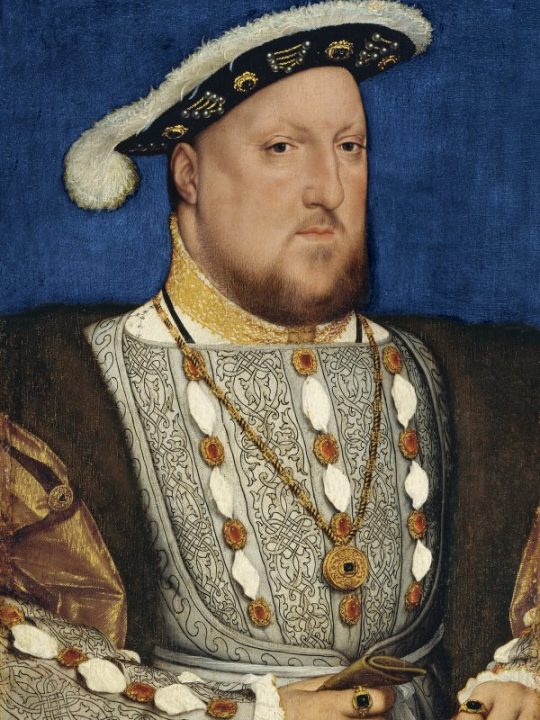
King Henry VIII’s Tomb is Lost
Although Henry states in his will that the tomb was almost complete, the wars with Scotland and France during the latter part of Henry’s life had drained the Exchequer, and work slowed down. Around the same time, the master sculptor responsible for the job, Rovezzano, returned to Italy due to bad health.
Another sculptor, Benedetto, was commissioned to take Rovezzano’s place and complete the tomb for the King. However, Henry VIII did not see it finished. In time, each of Henry VIII’s three children would express their intention to complete the memorial, but each successively failed to do so. Elizabeth I even moved the parts of the tomb to Windsor in 1565, where they stayed until 1645-6. Then, during the Civil War, elements of the monument were sold to raise funds for the Crown.
Just three years later, in 1649, the vault containing the bodies of the Tudor King and Queen was opened and the body of the executed Charles I was placed next to Henry’s coffin. (You can read more about this gory but compelling take here). In the same century, the body of a stillborn child of the future Queen Anne was also interred in the vault. These coffins remained undisturbed until the tomb was rediscovered in 1813 during excavations for a passageway to a new royal vault. At this time, A.Y. Nutt, Surveyor to the Dean and Canons, made a watercolour drawing of the vault (see below).
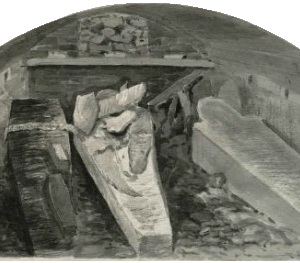
The Wolsey Angels
Until recently, only the black stone chest, later used for Admiral Lord Nelson’s monument in the crypt of St Paul’s Cathedral, and four bronze candlesticks, now at St Bavo Cathedral in Ghent, were thought to have survived from the Wolsey / Henry VIII tomb.
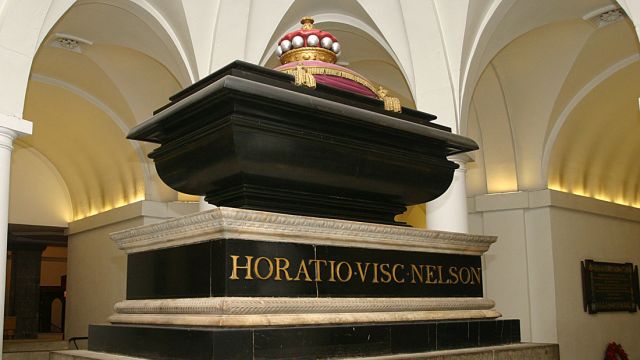
However, in 1994, two further angels appeared in an auction, unillustrated and catalogued simply as being ‘in Italian Renaissance style’. They were acquired by a Parisian art dealer. Later, the Italian scholar Francesco Caglioti convincingly attributed them to Benedetto. In 2008, the remaining pair of angels was discovered at Harrowden Hall, a country house in Northamptonshire, now owned by the Wellingborough Golf Club, where all four angels once stood on top of the gateposts.
Having been identified as being part of Wolsey’s original funerary monument, the four angels were acquired by the Victoria and Albert Museum in 2015 for £5 million, thus saving an incredibly important piece of Tudor history for the nation (read more here).
When all is Said and Done…
Some years ago, when I was writing Le Temps Viendra, a Novel of Anne Boleyn, I went to St George’s Chapel. Having walked in Anne’s footsteps all the way to the scaffold, I felt I had some unfinished business with Henry. I quietly had my say as I stood in front of the marble slab, looking down upon it and with tourists milling all around me. So, if you want to get an audience with His Majesty, there’s no place to get more up close and personal…and when Harry and Meghan walk down the aisle and over that black slab, I’ll be remembering…will you?
Visitor Information
If you are visiting Windsor Castle, particularly during the tourist season, I highly recommend booking tickets online in advance. You can buy them here. My other top tip for visiting the castle is to get there at the opening time. If you want some peace and the space to allow your imagination to work wonders, I highly recommend you get ahead of the crowds.
The other thing to note about Windsor Castle is that whilst the exterior of Windsor Castle has remained largely unaltered since the sixteenth century unless you know what you are looking for, it is difficult to pick up any Tudor vibe inside; sadly, the interiors have been significantly altered over time. If you want to time travel and see the Windsor that Henry knew, you will find all you need to know in In the Footsteps of the Six Wives of Henry VIII. This covers the Tudor appearance and layout of the royal apartments in the castle and some of the key events that occurred there.
Notes:
Benedetto da Rovezzano (1474-1554) was a contemporary of Michelangelo and was described by Giorgio Vasari as ‘…among our most excellent craftsmen.’ One of his early commissions, in 1508, was to finish Michelangelo’s bronze sculpture of David (now lost), indicating his metalworking skills were much in demand. He worked in England between 1519 and 1543 where his pre-eminent patron became Cardinal Wolsey.
If you have enjoyed touching the past through this blog, do remember you can subscribe to my mailing list to receive all the latest news on new blogs, podcasts, videos and in-person events by clicking this link.’

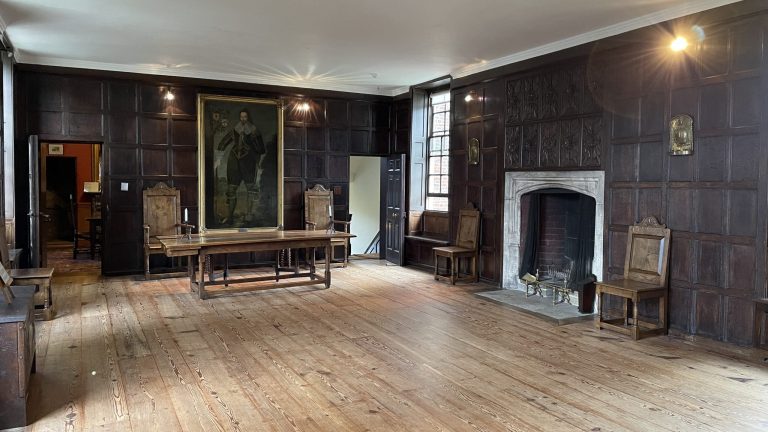
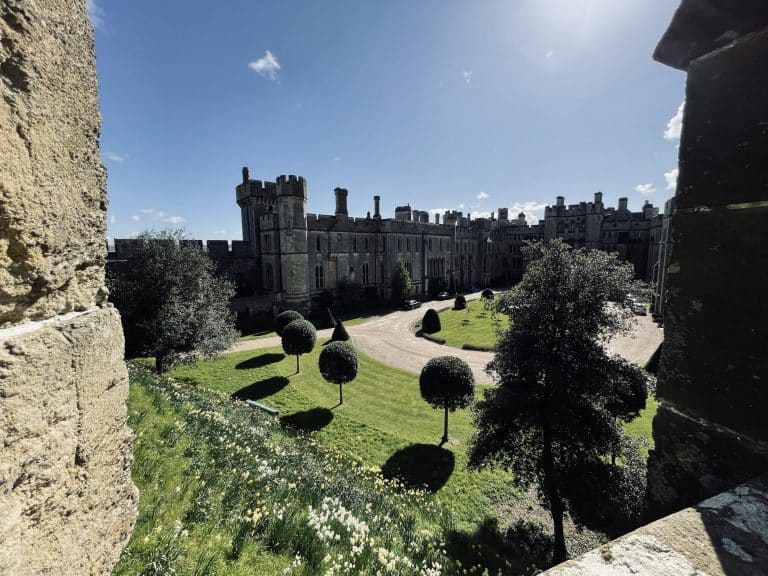
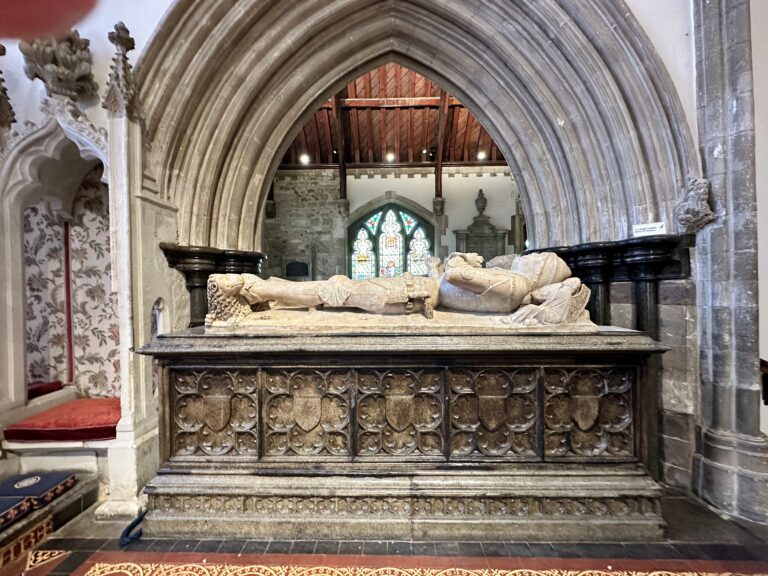
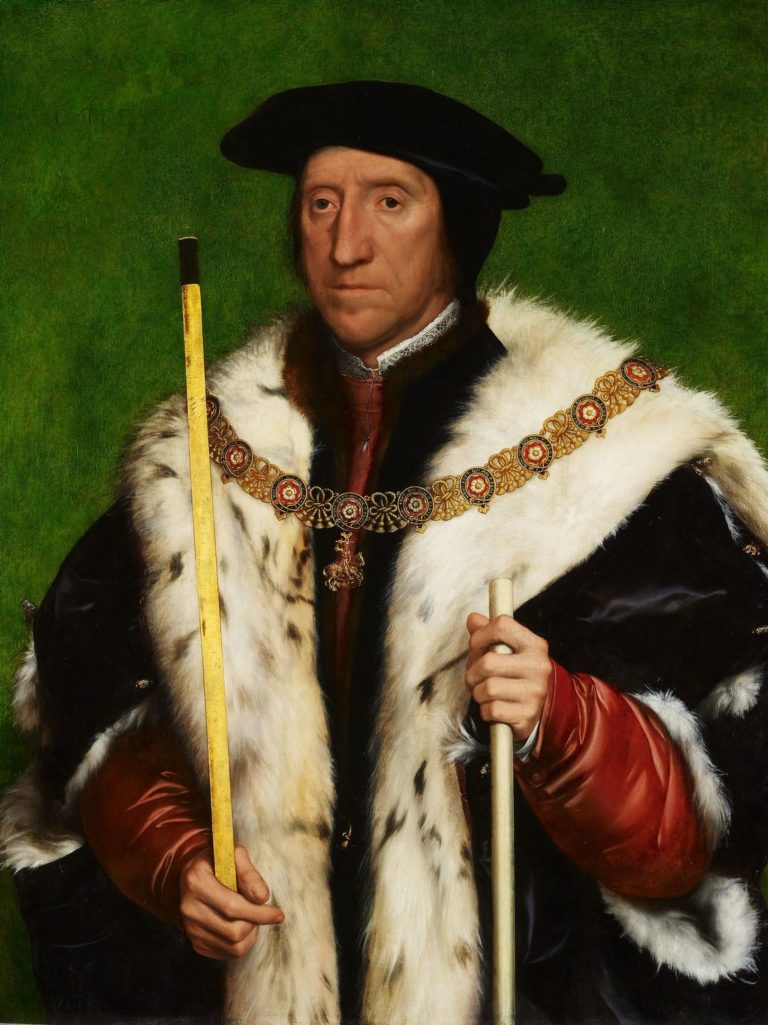
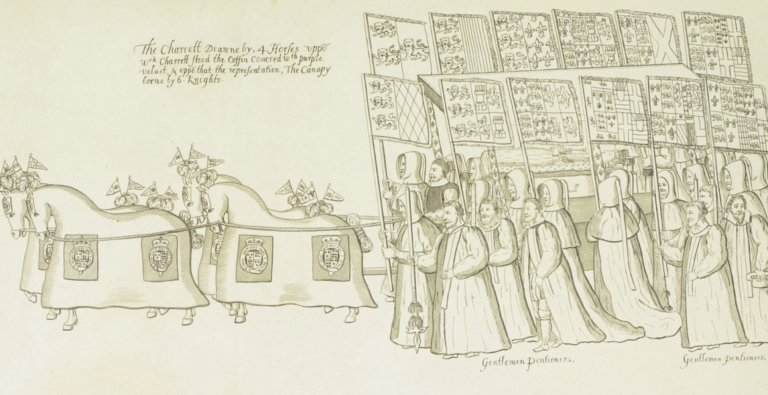
Absolutely excellent article , thanks for writing and posting.
I had the honour of visiting St Georges Chapel last September and as it was a Sunday we went to the morning service. That week I had been on a Henry VIII trail visiting places he had been and where each of his wives had been. So to sit in the pew by the side and look down on this black slab which is Henry VIII tomb was very surreal and hard to imagine he was down there. Having been told about the elaborate tomb that was planed for him and knowing what his character was like made it even more surreal.
I suppose though that those in the know, Henry VIII gets the last laugh as with the black slab where it is it will appear a lot on the TV during the wedding affording Henry free publicity which he would not have got had he been interned in his big original tomb.
Carry on with your great travel guides.
Many Thanks
Thanks Ian. Your kind words are much appreciated. A bit of cheering form the side lines always encourages a writer to write more! It is surreal looking down on Henry’s tomb, after all the stories we have read about him, all that we know, with all those emotions in tow…and yes, I can just see Henry having something to say about being right at the heart of the ceremony on the 19th!
I would imagine that not many are aware of what the black slab represents. Further, I would think that King Henry VIII would be furious to know what lay below the black slab, a cement coffin in ruins, not befitting an king, much less one who is so well known in history!
No..I was very sadden to see Henry coffin is damaged but Jane’s is fine why is that
Hi Tamar! Thanks for stopping by. I don’t think Henry’s coffin was wilfully damaged – as far as I am aware. perhaps for some reason it simply rotted more quickly…Happy to hear any other theories or if anyone knows differently!
Henry’s casket was placed on two wooden supports, what we today call a saw horse. The one supporting the upper part of the casket remains in place, while that at the foot of the casket has decayed causing it to drop to the floor. The debris on top of Henry’s casket appears to have fallen from the ceiling.
Hi Valerie!
Thanks for your comment. Do tell us more about the source for this lovely bit of detail!
Henry’s body exploded due to putrefication which probably accounts for the state of his coffin!n
Hello – lovely site thanks. Can I make a recommendation re having a more peaceful time at Windsor? This is under non- COVID times of course! I would recommend getting there later in the afternoon. All the tour groups rush to get there as early as possible in the morning as they will be squeezing in other sites in one day. If you go mid- late afternoon you have more chance of a less rushed / less crowded experience. You will miss the guard change though…
Love this! Thanks for posting.
During his reign, Henry had some some 40,000 people (80,000 by some estimates) executed. His daughter Mary had some 250 people executed during her reign, yet it’s she – not he – who is called “bloody”. He annulled his marriage with his first wife, Katherine, who truly loved him, and then went through 5 more wives, all in quest of a male heir. Ironically his daughter Elizabeth proved to be a better monarch than he. Great men like More and Fisher and countless others like Wolsey – who faithfully served his king as best he could – were abandoned, charged with treason, or killed on his order.
By Henry’s command, ancient monasteries and convents that had brought the people spiritual solace and social services for a millennium were closed, looted and pulled down to fill his coffers, with monks, friars and nuns forced to leave, accept a pension, or face death. He unleashed a wind in this regard that strengthened during his son Edward’s reign, and the English people lost something like 90% of their collective, tangible religious heritage. Statues, carvings, rood screens, vestments, murals, sacred vessels, books and more were destroyed. The bones of saints whose blood was in the blood of the nation were thrown into rivers or burned.
That this oafish, self aggrandizing pig who none dared gainsay lies rotting in a crushed and shoddy coffin with only a slab of stone above for a memorial (his name on it along with the names of others in the crypt) hardly makes my heart go “crack”. I do smile at the thought of Anne Boleyn’s coffin being beside his. And if the dead will rise on judgement day – I hope she smacks him.
I can see you feel very strongly about him! He does do that to people. However, it is Jane Seymour’s body that lies next to him – not Anne’s. She is in the Tower.?
Yes.. Anne Boleyn is indeed buried in the Chapel at the tower…made my blood run cold when I realised just where…and I was truly saddened to learn that there was no commerative symbol or headstone..until Queen Victoria was so moved , that she commissioned one…
Yes, in the chapel of St Peter Ad Vincula.
Thanks for the article. Is Charles I still with Henry VIII and Jane?
Yes, he is.